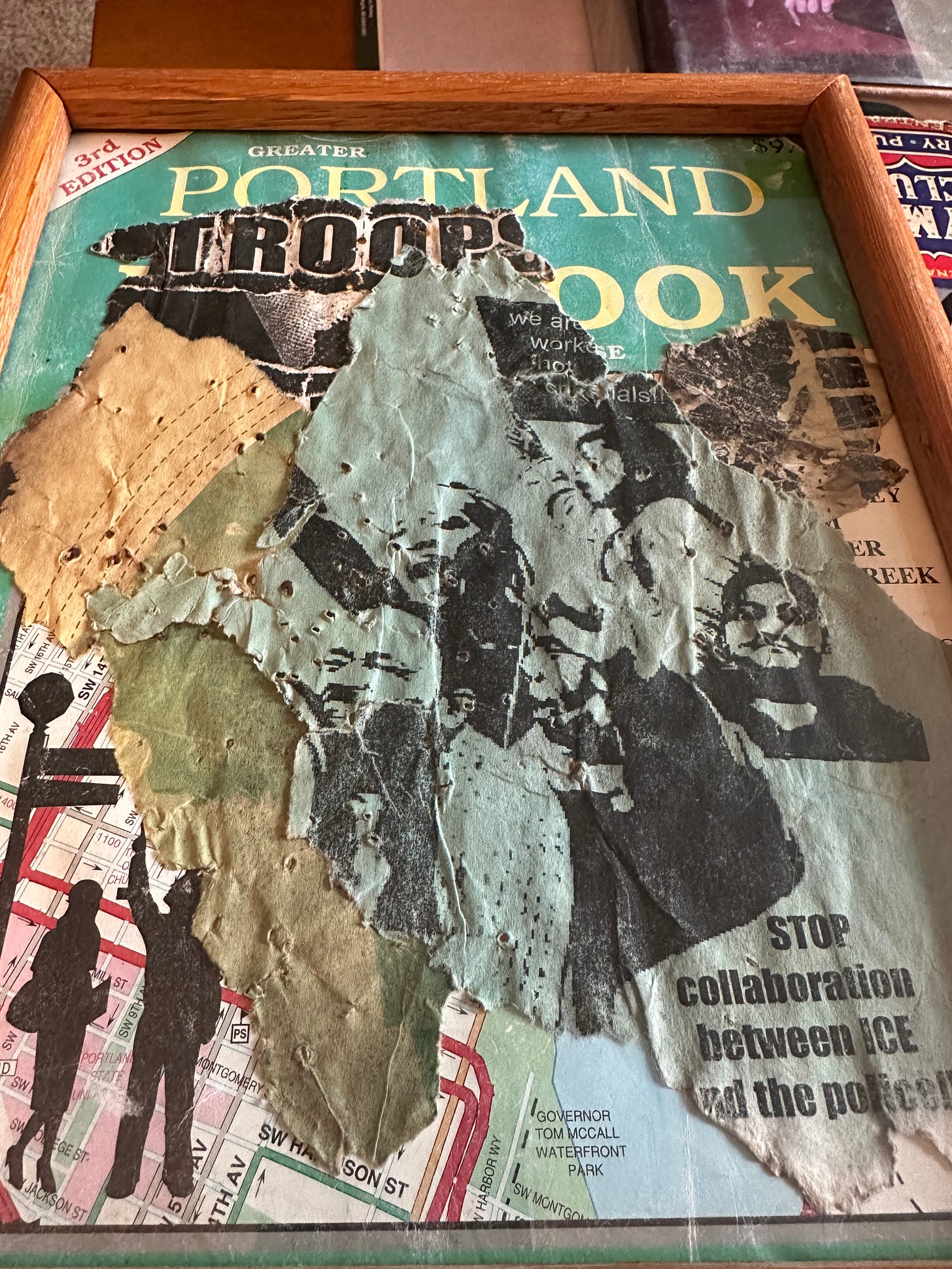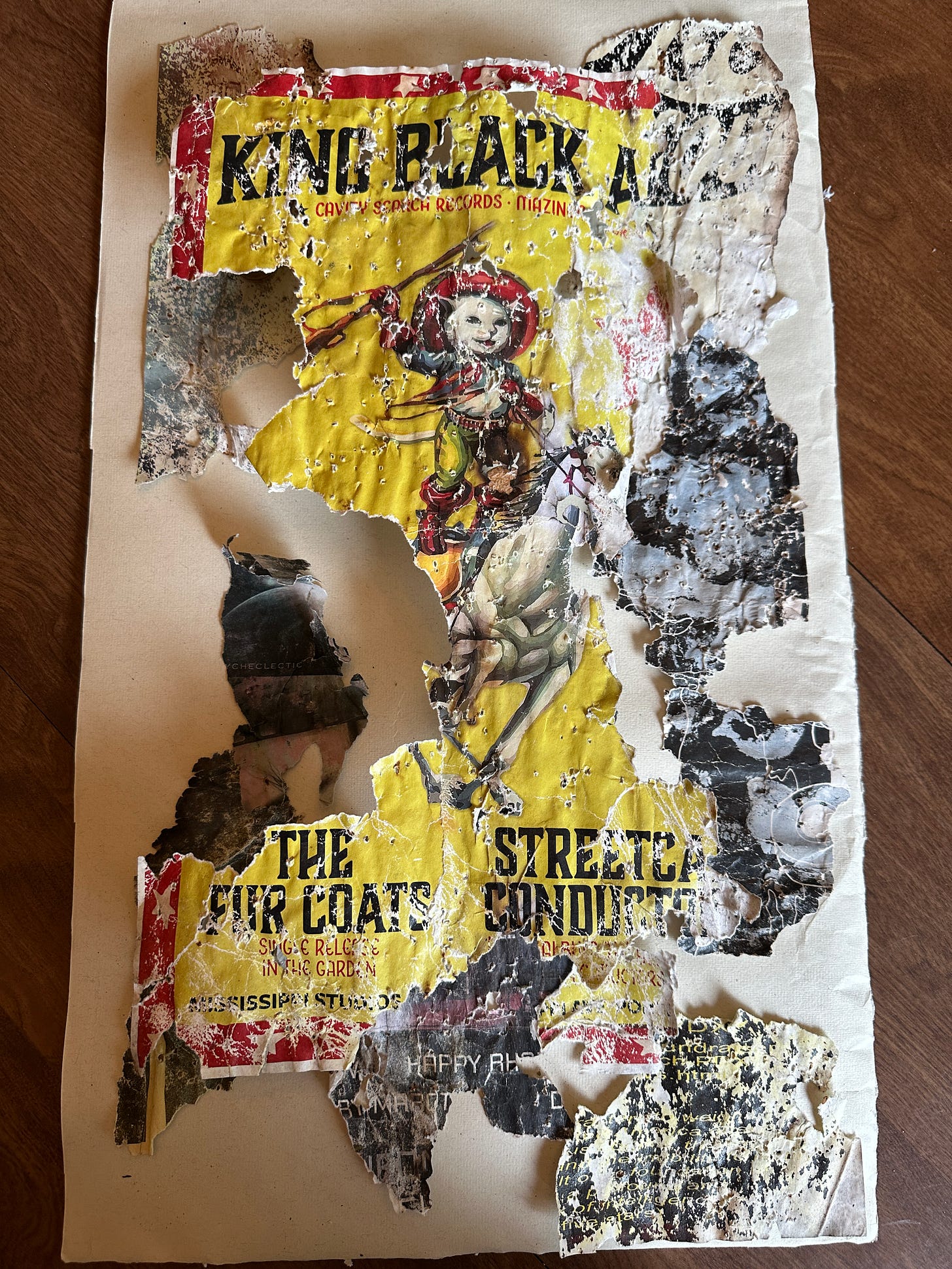Shard Vision: — Troops
This is part 3 of a continuing presentation of a manuscript in progress on my exploration of the wide and splintered topic of fragmentation.
The word “shard” gained great meaning as my efforts sharpened in 2023 and 2024 in connecting pieces of my consciousness as a mid-sixties guy.
The segments that shape my aging mind carry on something that I happily recognize: a lifelong inclination toward disjointed thinking.
This random mental state gathered when I was a teenager, then pooled to an awareness by my early twenties. I started writing down random and myriad ideas in my late twenties, collating them in my thirties and forties, and appreciating them by my fifties.
I’ve grown old with these fragments.
And as the fragments are coming together, so is my appreciation and understanding of fragmentation as a force in just about every aspect of life.
I have another writing project in the works, called Wordyssey, my exploration of 25 years (and more) of letter writing. It, too, is an assembling of sorts: fragments finding form.
I’m attempting to make connections.
^^^
My Burn the Ax Handle platform on Substack.com started as a broad field of intentional fragments – and a lesson gaining great truth for me is that the phrase is no oxymoron. And what I call the Randomary project, occasionally presented in Burn the Ax Handle, is also about fragments and the sense of relationship among disconnected pieces of literature.
“Either a remnant of something once complete and now broken or decayed,” Anne Janowitz describes fragments in the Wiley online library, “or the beginning of something that remains unaccomplished.”
Wordyssey, Randomary and Burn the Ax Handle are like a set of scattered brain-wave nesting dolls.
Further, I have come to terms with the birth and necessity of my alter ego, Ned McFeeny, a persona composed of shards who shows up in BTAH from time to time. Well before BTAH, he made an annual appearance in print, like a guide to my splintered sense of awareness.
I do not take lightly the concept of fragmentation. I see it in everyday life and it also has major historic and geopolitical meaning.
“Fragmentation is costly even in normal times and makes it nearly impossible to manage the tremendous global challenges that the world now faces,” writes Kristalina Georgieva in the September/October 2023 issue of Foreign Affairs.
“For the fragment always grieves for the whole,” Robert MacFarlane wrote, more philosophically, in his book Landmarks.
MacFarlane would remark later in the book, “the inestimable value of the instant is proved by its perishability.”
The 19th century philosopher Friedrich Schlegel developed a theory of the artistic or philosophical fragment as “a radiant moment that reached beyond its own boundaries,” according to writer Michael Bradshaw.
In that radiance are the words of the Irish writer Benedict Kiely: “Every experience is a quotation and every quotation is a renewed experience – a light switched on again in a darkened room to reveal familiar objects.”
Elena Ferrante titled her memoir, Frantumagli, a term her mother used to describe “a disquieting jumble of fragments that tore her apart and depressed her, a mysterious ‘debris in a muddy water of the brain’ that woke her in the night and made her weep for no immediate reason.” (Lisa Appisignani, writing in The Guardian newspaper in 2016.)
The 20th century Irish writer Liam O’Flaherty pointed to the same feeling in his remarkable novel “The Informer”: “A horde of things crushed together in his brain, making an infernal buzz. He lost control of himself, and ran about under his archway, striking out with his hands and feet, madly, trying to fight the cargo of things jammed together in his brain.”
The poet Rumi, whose works show the power of fragments, wrote, “There’s a strange frenzy in my head, of birds flying. Each particle circulating on its own. Is the one I love everywhere?”
These disparate writers acknowledge something vital within fragmentation: jumbled cargo or debris, that sense of disorder and chaos, the “broken or decayed” in the interest of considering the whole picture. But I prefer the “beginning of something.”
“These fragments I have shored against my ruin,” T.S. Eliot wrote in his fragment poem “The Waste Land.”
^^^
As I reckon with years of a fragment sensibility, I realize that instead of the “riddle buried in an enigma” concept, in my case it’s “a shard encased in a segment.” And for me it is all about the positive and the possible. It’s what enabled me at age 67 to turn to a new form of art, experimentally perhaps, using pieces of decades’ old, weathered rock-n-roll posters I peeled off power poles in Portland and placed in frames. Samples of what I call “Shard Visions” are shown at the top bottom of this post.
John Updike referred to art as “A religion reassembled from the fragments of our daily life, in an atmosphere of gaiety and diligence.”
Humbly, I quote the late artist Frank Kowing: “How do you find the secret self that is the well-spring of inspiration, the deep image?… It is a personal ‘howl,’ inside my head, reflecting only truth. Passion is all grandiose, perhaps, but after making art for half a century, I have found the deep image; it is the culmination of being immersed in many other artists’ work, living or dead. It is the collision between art and life.”
Collision and reassembly, pieces on their way to something.
-- N.R.




Interesting exploration, Kirby. I think I get it. Thanks.
I'm glad that you gave at least some recognition to Ned McFeeny, as he always had a much better elbow jumper.